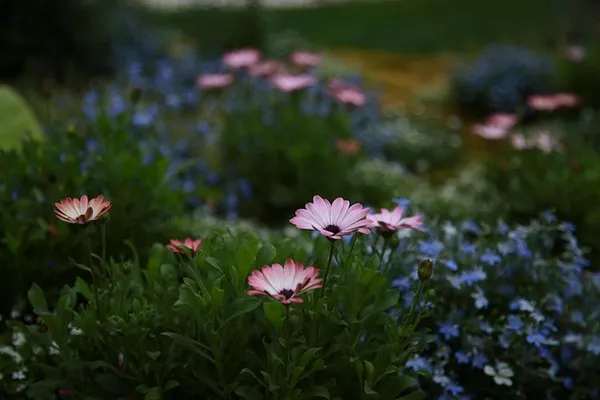Flowers have been cherished for centuries for their aesthetic beauty, fragrance, and symbolic meanings. However, beyond their ornamental value, many flowers also offer a delightful and surprising addition to the culinary world. Incorporating edible flowers into your diet not only adds a burst of color and flavor but also introduces unique textures and nutritional benefits. In this article, we’ll explore a diverse array of flowers that are not only visually appealing but also safe and delicious to eat.
Nasturtiums (Tropaeolum majus):
Nasturtiums are a popular choice among edible flowers, known for their vibrant hues of orange, red, and yellow. With a peppery flavor reminiscent of arugula, both the leaves and flowers of nasturtiums can be used to enhance salads, sandwiches, and even pasta dishes. Their bold taste adds a zesty kick to your culinary creations.
Calendula (Calendula officinalis):
Calendula, also known as pot marigold, boasts bright yellow and orange petals that are not only visually stunning but also edible. Known for their slightly bitter and tangy flavor, calendula petals can be used to garnish salads, soups, and rice dishes. Additionally, they can be infused into oils or used to make herbal teas, providing a subtle and soothing taste.
Lavender (Lavandula angustifolia):
Lavender is renowned for its aromatic fragrance, but few may realize that its delicate flowers are also edible. With a sweet and floral flavor, lavender can be used to infuse desserts, beverages, and even savory dishes. Be cautious, however, as a little goes a long way – a touch of lavender can elevate your culinary experience without overwhelming the palate.
Rose (Rosa spp.):
Roses, often considered the epitome of romance, are not only a symbol of love but can also be a delectable addition to your meals. The petals of roses are edible and impart a subtle, floral taste. Ensure that the roses you consume are free of pesticides and other chemicals. Rose petals can be used in salads, desserts, and even to make fragrant syrups for beverages.
Chrysanthemum (Chrysanthemm spp.):
Chrysanthemums, with their diverse shapes and colors, are not just for decorative purposes. The petals of certain chrysanthemum varieties are edible and offer a slightly bitter, herbaceous flavor. Popular in Asian cuisine, chrysanthemum petals can be used in salads, stir-fries, or brewed into a delicate tea. It’s essential to select edible chrysanthemum varieties and avoid those treated with pesticides.
Violets (Viola spp.):
Violets, with their dainty, purple-hued petals, are not only charming but also edible. These flowers have a sweet, floral flavor that can be used to garnish salads, desserts, or even ice cubes for an elegant touch to beverages. Violets are rich in vitamin C and can add both visual appeal and nutritional value to your dishes.
Dandelion (Taraxacum officinale):
Commonly considered a weed, the dandelion is surprisingly versatile in the kitchen. The entire plant is edible, from its leaves to its vibrant yellow flowers. Dandelion flowers have a slightly sweet taste and can be used in salads, fritters, or to make dandelion-infused honey. The leaves are also nutritious and can be added to salads or cooked as greens.
Pansy (Viola tricolor var. hortensis):
Pansies, with their “faces” of vibrant colors, are not just visually appealing; they are also edible. Pansy petals have a mild, slightly grassy flavor and can be used to garnish salads, desserts, and even cocktails. These delicate flowers are an excellent way to add a touch of elegance to your culinary creations.
Squash Blossoms (Cucurbita spp.):
While not technically a flower, squash blossoms are culinary delights often used in various cuisines. These blossoms, usually from zucchini or pumpkin plants, have a mild, slightly sweet taste. Commonly stuffed with cheese or herbs and then battered and fried, squash blossoms make a delicious and visually striking addition to appetizers or main courses.
Borage (Borago officinalis):
Borage, with its vibrant blue flowers, is not only a beautiful garden addition but also a versatile edible flower. Both the flowers and leaves of borage have a mild, cucumber-like flavor. The flowers can be used as a garnish for salads, desserts, or frozen into ice cubes for refreshing beverages. Borage is also rich in gamma-linolenic acid (GLA), an essential fatty acid.
see also What Is February Birth Flower
Conclusion:
Exploring the world of edible flowers opens up a realm of possibilities for creative and visually stunning culinary experiences. From the peppery notes of nasturtiums to the sweet aroma of lavender, incorporating flowers into your dishes can elevate both the flavor profile and presentation of your meals. However, it’s crucial to exercise caution and ensure that the flowers you consume are free of pesticides or other contaminants. So, the next time you’re looking to add a touch of elegance and uniqueness to your culinary creations, consider reaching for edible blooms and embark on a delightful journey of taste and visual delight.


